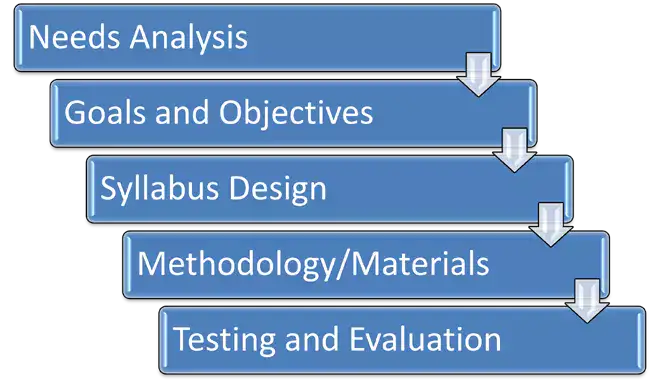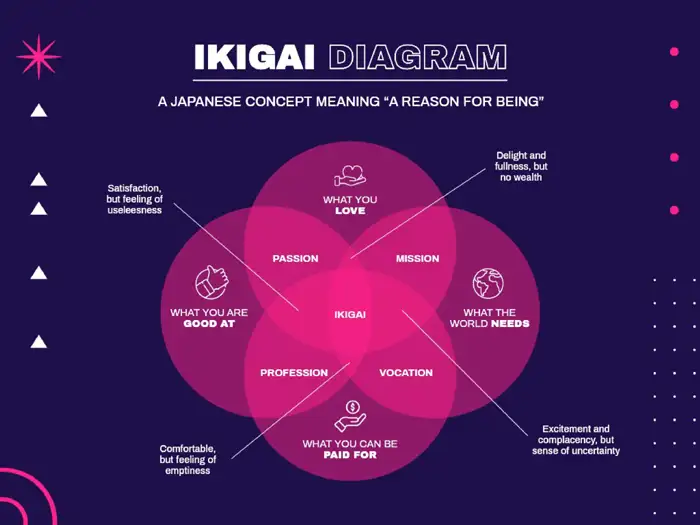Tyler’s Ends-Means Model in curriculum design and development written by Dr. Mohammad Hossein Hariri Asl with a video tutorial narrated by the author.
Author: Dr. Mohammad Hossein Hariri Asl
Watch this video on Tyler’s Ends-Means Model
Tyler’s Ends-Means Model
Ends-means model has been widely adopted in language teaching from the 1980s. It has been described as the ‘ends-means model’ because it starts with a determination of the kinds of language skills the learner needs in order to accomplish specific roles and tasks and then sets out to teach the language needed to get there (Richards, 2001).
According to Auerbach (1995), in the ends-means model, curriculum development is driven at all stages by experts who are external to the process of educating the target population. Competencies, skills and information are defined by independent research; materials are written by developers who are in touch with the experts; assessment guidelines and measurable outcomes flow naturally from this deductive corpus.

At the tail end of this process, the teacher is handed a syllabus and a set of materials and instructed to impart this knowledge to the eagerly-awaiting students. That any learning at all occurs in this process is a tribute to the motivation and creativity of the teachers and students who, in Auerbach’s view, are actually battling great odds to produce any real results.
The value of teaching discrete reading skills is controversial but coursebooks continue to provide activities designed to nurture these skills. Nuttall (1985, as cited in Tomlinson, 2003), in her review of reading materials, says, “That it is possible to promote reading skills and strategies is still largely a matter of faith, but the number of materials produced show that it is a faith widely held” (p. 199).
According to Willis and Willis (1996), there are two aspects of the teaching of skills. Students need to practise in the classroom the things they will need to do with the language outside the classroom.
The competency pattern is characterized by the application of what is commonly termed an “ends-means model,” popularized by Robert Tyler in the 1950s. Objectives, the ends of instruction, are first identified. The content of instruction is selected to address the objectives, and the various instructional elements, the means, are then designed to assist students in attaining the objectives. This is a characteristic also shared with the academic rationalist design pattern (Herschbach, 1992).

In the field of curriculum studies, the approach was sometimes reduced to a mechanistic set of procedures and rules known as a ‘systems-design’ model.
Systems-design Model
A system in this context is “an integrated plan of operation of all components (sub-systems) of a system, designed to solve a problem or meet a need” (Briggs, 1975, p. 5, as cited in Richards, 2001). The systems model belongs to an approach to educational planning that sees curriculum development as a rational and somewhat technical process. Rodgers (1989, p. 27, as cited in Richards, 2001) observes:
The curricular systems-design model has been prescriptive and rule-driven. It describes a linear sequence of events comprising formulation of objectives, selection of content, task analysis, design of learning activities, definition of behavioral outcomes and evaluative measures of determining the achievement or non-achievement of these outcomes.

However, Breen and Littlejohn (2000) criticize this prescriptive nature of ends-means model and propose a model, which is more negotiable in nature. They view negotiation as “an important component central to the language-learning process itself, involving, as it does, interacting through language while negotiating meanings in a shared context” (p. 94).
Various different models of the process of course design (e.g. Johnson 1989; Dubin & Olshtain, 1986; Richards, 1990, as cited in Tomlinson, 1998) suggest that materials design or selection should come at a later stage of the process. The sequence of course design recommended by experts who are proponents of the ends-means model may be summarized as the linear Model X in Figure 1:

According to Tyler (1949, as cited in Richards, 2001), the more specific the specification of objectives, the easier it would be to determine the sorts of activities that students could be engaged in. Tyler’s approach is seen as the linear model as well as the ‘ends-means’ model.
The first approaches are called normative– Objectives (Tyler, 1949, as cited in Richards, 2001) and the rational-instructional models (Taba, 1962, as cited in Lunenburg, 2011) because they provide a sequence of steps.
The ‘Objectives approach’ is so named because the very first step in this approach is the defining of objectives of the course/program/lesson. (Tyler, 1949, as cited in Richards, 2001). In this approach, the school is viewed as a ‘factory’. Tyler states three important sources that must be looked at in order to contextualize and make curriculum development more relevant. These are: (1) The learners and their backgrounds, (2) Present and future society, and (3) Knowledge of the major disciplines, especially Philosophy, Psychology and Sociology.
Nicholls and Nicholls (1972, as cited in Richards, 2001) describes curriculum development as involving four stages:
- The careful examination, drawing on all available sources of knowledge and informed judgement, of the objectives of teaching, whether in particular subject courses or over the curriculum as a whole.
- The development and trial use in schools of those methods and materials which are judged most likely to achieve the objectives which teachers agreed upon.
- The assessment of the extent to which the development work has in fact achieved its objectives. This part of the process may be expected to provoke new thoughts about the objectives themselves.
- The final element is therefore feedback of all the experience gained, to provide a starting point for further study (p. 40).

This educational philosophy emphasizes the practical needs of learners and society and the role of an educational program in producing learners who are economically productive. People can improve themselves and their environment through a process of rational planning. Social, economic, and other needs of society can be identified and planned for “by task analysis, by forming objectives for each task, and by teaching skills as discrete units” (Uhrmacher 1993, as cited in Nunan, 1989). It is an ends-means approach.
Criticism
Nunan (1989) believes that there is a mismatch between what teachers are taught to do and what they actually do because once inside the classroom, the teacher must come up with a constant flow of activities or face behavioral problems. He (1989) states, “Activities (or, as I have called them, tasks) rather than the prescriptive ends-means model are the major focus of the teacher’s planning efforts” (p. 133).
Inductive models provide a unique approach to curriculum making as compared to the traditional deductive models, which are linear and prescriptive (Lunenburg, 2011). A nonlinear approach permits curriculum planners to enter a model at various points, skip components in the model, reverse the order, and attend to two or more components of the model simultaneously.
Conclusion
Curriculum is viewed as an ends-means model because inside of the curriculum development process we can find the means and the end. This means that for example when teaching English, the final goal is that students are able to use and apply the language, that is the end. And the means (how), in the way teachers are going to allow students to get there, that is through the language itself, because with practice we can deeply develop skills in students.
References
- Auerbach, E. R. (1995). Making meaning, making change: Participatory curriculum development or adult ESL literacy. The Electronic Journal for English as a Second Language, 1(3).
- Breen, M. P., & Littlejohn, A. (2000). Classroom decision-making: Negotiation and process syllabuses in practice. Cambridge: Cambridge University Press.
- Herschbach, D. R. (1992). Technology and efficiency: Competencies as content. Journal of Technology Education, 3(2).
- Lunenburg, F. C. (2011). Curriculum development: Inductive models. Schooling, 2(1), 1-8.
- Nunan, D. (1989). Designing tasks for the communicative classroom. Cambridge: Cambridge University Press.
- Richards, J. C. (2001). Curriculum development in language teaching. Cambridge: Cambridge University Press.
- Taba, H. 1962. Curriculum development: Theory and practice. New York: Harcourt Brace.
- Tomlinson, B. (1998). Materials development in language teaching. Cambridge: Cambridge University Press.
- Tomlinson, B. (2003). Developing materials for language teaching. London: Continuum.
- Willis, J., & Willis, D. (1996). Challenge and change. Oxford: Macmillan Publishers Limited.
How to cite this article in APA Style?
Hariri Asl, M. H. (2023). Tyler’s Ends-Means Model in curriculum development. LELB Society, https://lelb.net/tylers-ends-means-model/



